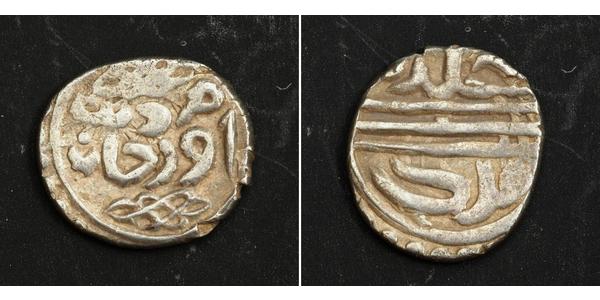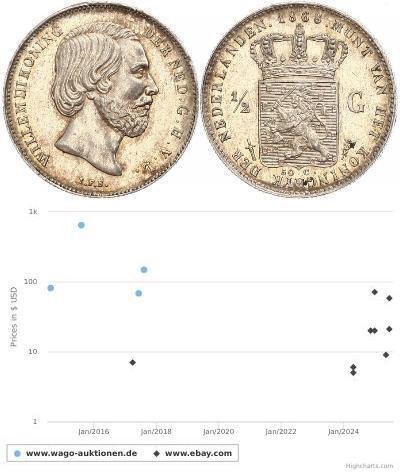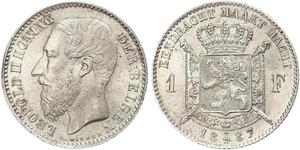(Verkauft für $9.0)
1359, Ottoman Empire, Sultan Murad I "the God-like". Silver Akce Coins. aXF!
Reference: Pere 8. Denomination: Akce Condition: About XF! Mint Period: 1360-1389 AD Diameter: 13mm Weight: 1.2gm
Obverse: Inscirption terminated by arabesques.
Reverse: Two-lined inscription separated by triple line.
Murad I (nick-named Hüdavendigâr - from Persian:Khodavandgar - "the God-like One") (Turkish: I. Murat Hüdavendigâr) (March or June 29, 1326, Sogut or Bursa – June 28, 1389, Battle of Kosovo) was the ruler of the Ottoman Empire, Sultan of Rûm, from 1359 to 1389. He was the son of Orhan I and the Valide Sultan Nilüfer Hatun (whose name means Water lily in Turkish), daughter of the Prince of Yarhisar or Byzantine Princess Helen (also named Nilüfer), who was of ethnic Greek descent and became the ruler following his father's death in 1359.
He established the Empire by building up a society and government in the newly conquered city of Adrianople (Edirne in Turkish) and by expanding the realm in Europe, bringing most of the Balkans under Ottoman rule and forcing the Byzantine emperor to pay him tribute. It was Murad who established the former Osmanli tribe into an empire. He established the title of sultan in 1383 and the corps of the janissaries and the devsirme recruiting system. He also organised the government of the Divan, the system of timars and timar-holders (timariots) and the military judge, the kazasker. He also established the two provinces of Anadolu (Anatolia) and Rumeli (Europe).
Murad fought against the powerful emirate of Karaman in Anatolia and against the Serbs, Bulgarians and Hungarians in Europe. His moves in the Balkans brought together a Christian coalition under the king of Hungary, but it was defeated at the Battle of Maritsa on September 26, 1371, by Murad's capable second lieutenant Lala Sâhin Pasa, the first governor (beylerbey) of Rumeli. In 1366 the Serbian king was forced to pay tribute to the Sultan and in 1385 Sofia fell to the Ottomans. In 1386 Prince Lazar Hrebeljanovic defeated a small Ottoman force at the Battle of Plocnik. The Ottoman army did not suffer heavy casualties, and was unable to capture Niš on the way back. In 1389 Murad's army defeated the Serbian Army and its allies under the leadership of Lazar at the Battle of Kosovo.
There are different accounts from different sources about when and how Murad I was assasinated. One Western source states that during first hours of the battle, Murad I was assasinated by Serbian nobleman and knight Miloš Obilic by knife. Most Ottoman chroniclers (including Dimitrie Cantemir)state that he was assasinated after the finish of the battle while going around the battlefield. Others state that he was assasinated in the evening after the battle at his tent by the assassin who was admitted to ask a special favour. His older son Bayezid, who was in charge of the left wing of the Ottoman forces, took charge after that. His other son, Yakub Bey, who was in charge of the other wing, was called to the Sultan's command center tent by Bayezid, but when Yakub Bey arrived he was strangled, leaving Bayezid as the sole claimant to the throne.
In the earliest preserved Christian record, a letter of Florentine senate to the King Tvrtko I of Bosnia, dated 20 October 1389, Murad I's killing was described. The killer is not named but it was one of 12 Serbian noblemen managed to break through the Ottoman ranks:
Fortunate, most fortunate are those hands of the twelve loyal lords who, having opened their way with the sword and having penetrated the enemy lines and the circle of chained camels, heroically reached the tent of Amurat himself. Fortunate above all is that one who so forcefully killed such a strong vojvoda by stabbing him with a sword in the throat and belly. And blessed are all those who gave their lives and blood through the glorious manner of martyrdom as victims of the dead leader over his ugly corpse.
Sultan Murad's internal organs were buried in Kosovo field and remains to this day on a corner of the battlefield in a location called Meshed-i Hudavendigar which has gained a religious significance by the Muslims (which had been renamed Obilic by the Serbs). It has recently been renovated. His other remains were carried to Bursa, his Anatolian capital city, and were buried in a tomb at the complex built in his name.

|
Beigetragen von:
anonymous 2018-10-09 |
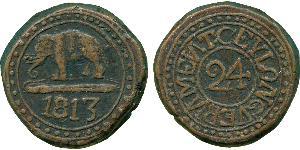
1/24 Rixdollar / 2 Stiver Sri Lanka Kupfer
Diese Gruppe hat 14 Münzen / 14 Preise
Add coin to this group

1 Акче Osmanisches Reich (1299-1923) Silber
Diese Gruppe hat 9 Münzen / 7 Preise
Add coin to this group
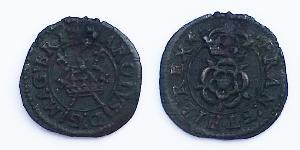
1 Farthing Königreich England (927-1649, ...
Diese Gruppe hat 2 Münzen / 1 Preise
Add coin to this group
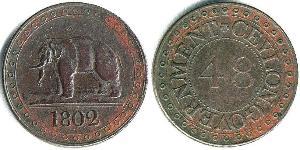
1 Stiver Königreich Großbritannien (1707 ...
Diese Gruppe hat 7 Münzen / 5 Preise
Add coin to this group

1 Altin Osmanisches Reich (1299-1923) Gold
Diese Gruppe hat 7 Münzen / 6 Preise
Add coin to this group

1 Dinar Böhmen Silber Wratislaus II of B ...
Diese Gruppe hat 3 Münzen / 2 Preise
Add coin to this group
1 Franc Belgien Silber Leopold II (1835 - 1909)
Diese Gruppe hat 12 Münzen / 10 Preise
⇑

